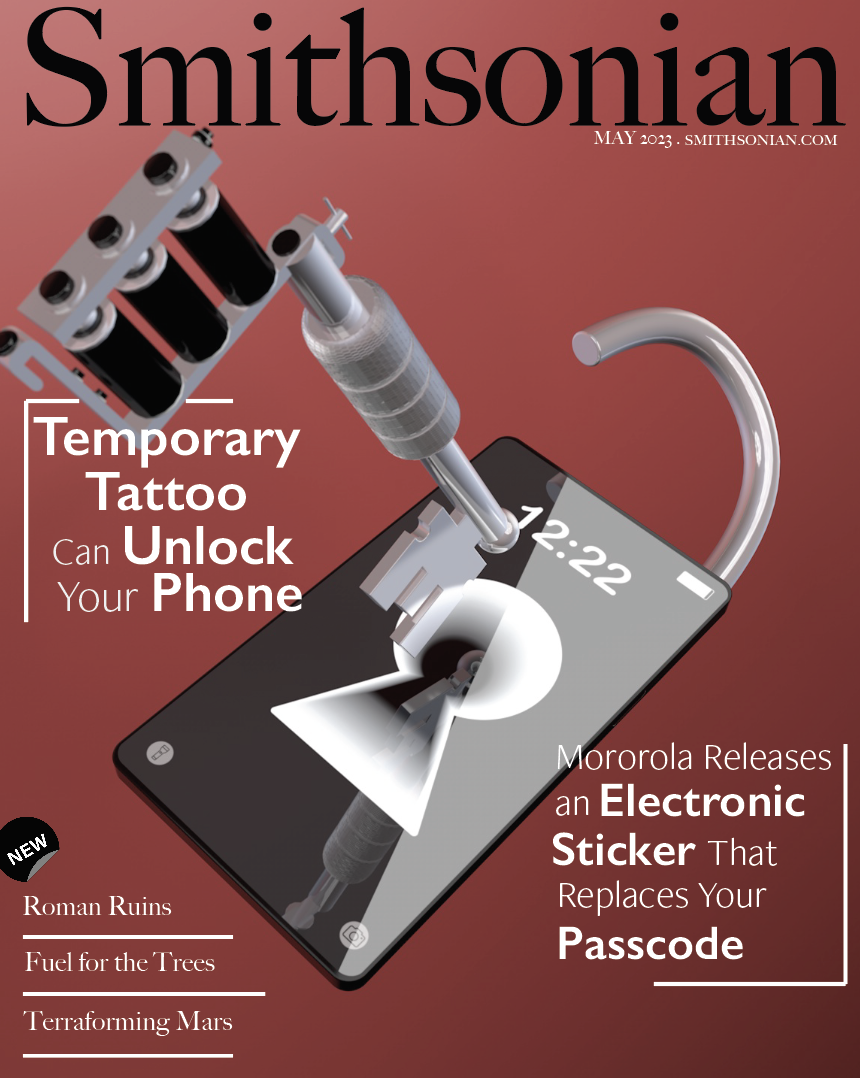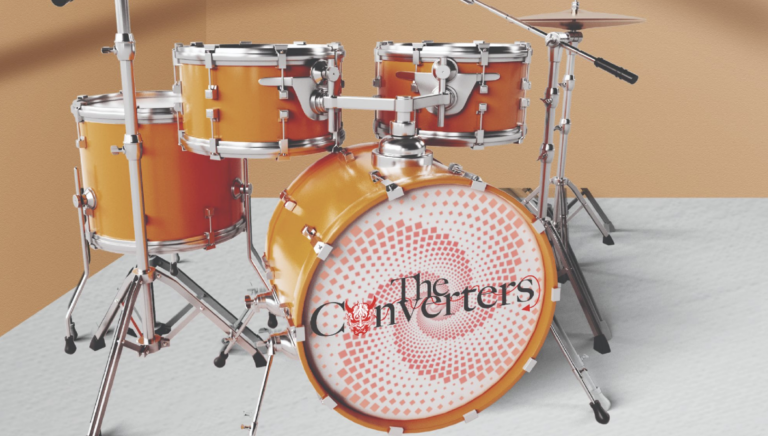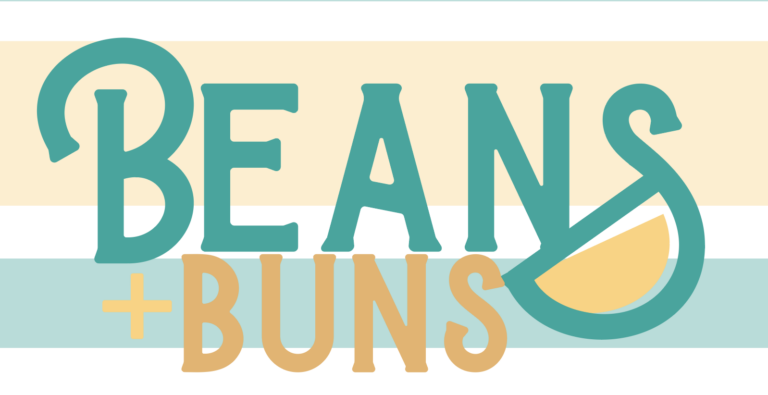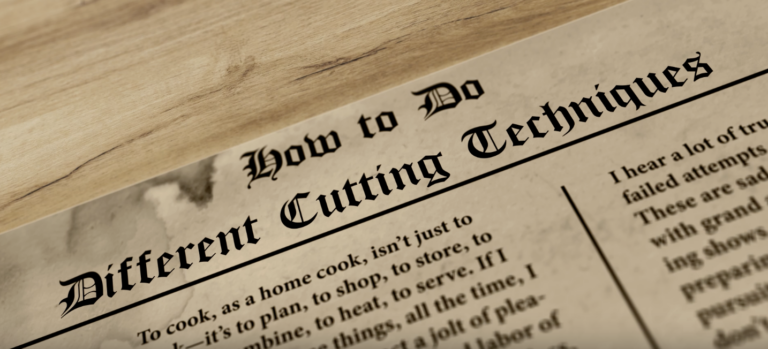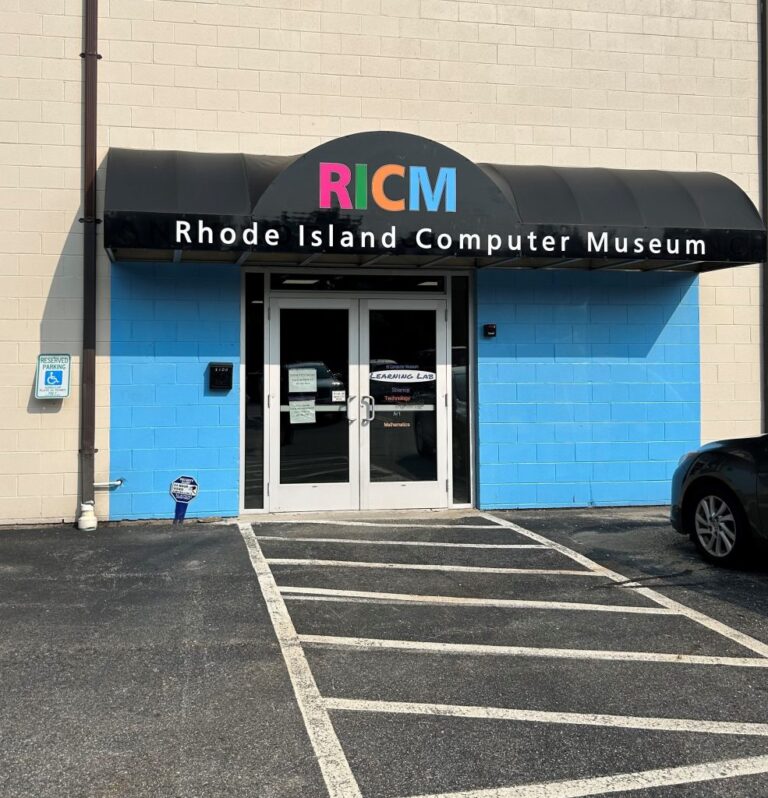Tattoo Tech
As a design student I was tasked to create an article for the audience of Motorola. The goal of this design was to inform others about the benefits of the temporary tattoo that can unlock your phone. The challenge required was that there are both pros and cons to this creation. This case study explains how I met that challenge.
Target Persona
- My target persona would approach a problem by reading into the pros and cons of the temporary tattoo.
- They would be dealing with an educated customer in a competitive market alongside new devices to use temporary tattoos to unlock phones.
- The customer values security and wants style and novelty.
About
- Owners of Moto X devices can now quickly unlock their devices by tapping them against a self-adhesive digital tattoo that was developed in collaboration with the California firm VivaLnk.
- It is safer and more reliable than biometric systems, like the Apple touch ID.
- The near field communication (NFC) chip is located inside the nickel-sized digital tattoos ($10 for a pack of 10). A wireless communication standard called NFC permits the transfer of brief information packets.
About the Client
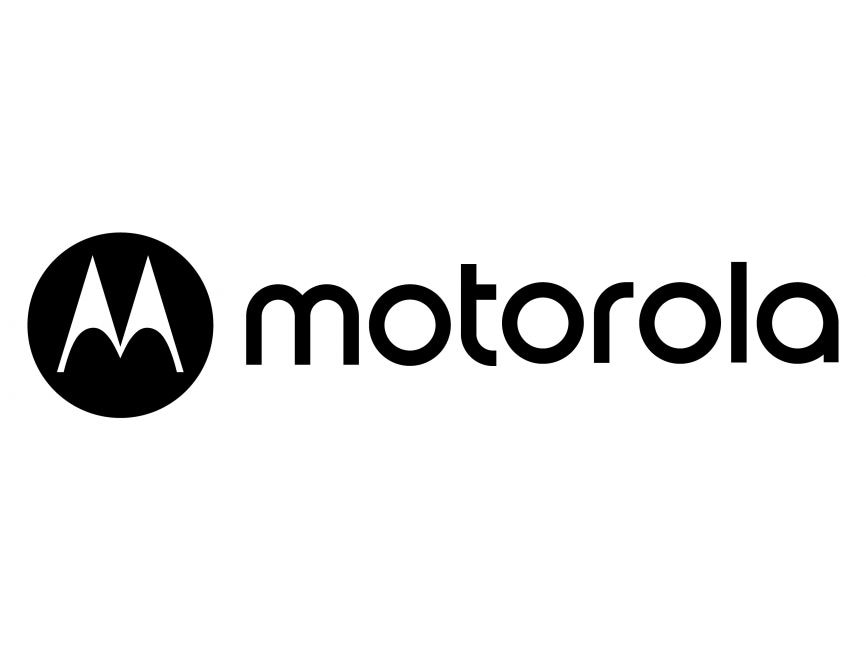
Motorola, Inc. was an American multinational telecommunications company based in Schaumburg, Illinois. Their position within the industry is wireless communications and electronic systems. Their target persona consists of consumers who are tech-oriented who consume a lot of digital media and influence others. Motorola has targeted younger generation and professional as its target customers. Motorola Solutions is headquartered in Chicago, IL and has 10 office locations located throughout the US.
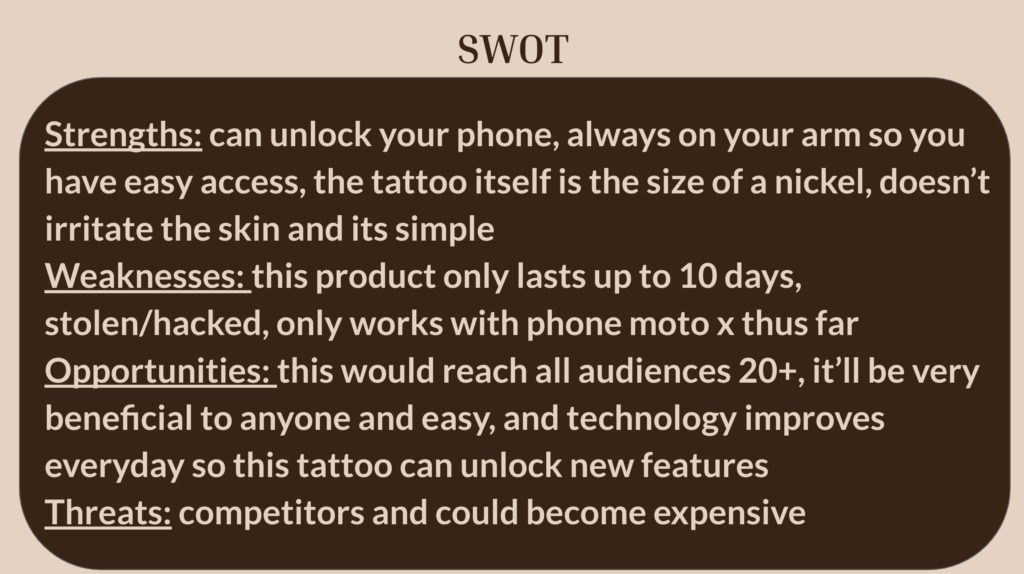
Their Challenge

The issues or challenges that the client wanted me to address would be how the fundamental thing about biometric information that could be stolen or hacked and you can’t recover it. How fingerprint scanners or face id have additional costs. Lastly, how they wouldn’t get enough sales to continue any further. I think this was a pre-existing problem. The changes within the industry would be, people foreseeing the good and thinking right into the negative. It could be stolen, it can be hacked, it’ll have additional costs, there wouldn’t be additional sales, etc. They engaged in my organization to help because I will be able to give my reasoning for both sides; the pros and the cons. I would be comfortable in their industry because I have empathized towards the pros on he idea of having a temporary tattoo to unlock a phone and do more things in the future.
The Solution
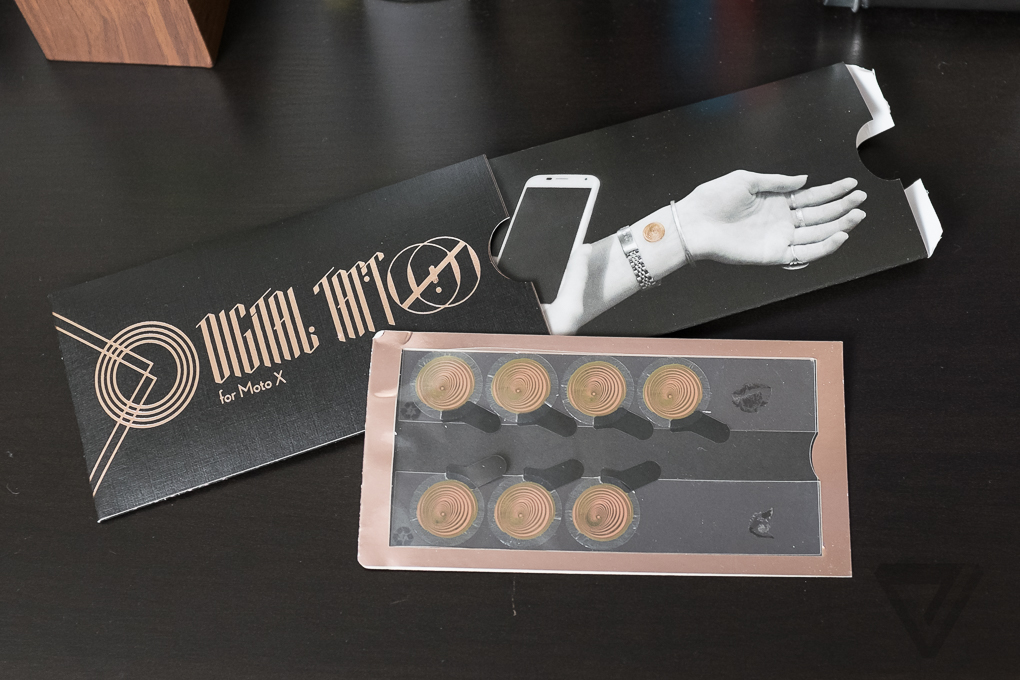
I would approach the challenge by doing research on the certain challenges. For example, if you lost an NFC id, you can simple change it to a different ID, like if you lost a credit card. Another example would be that Motorola is already planning the second generation of the tattoo that have integrate sensors to get temperature or pulse monitoring. This was a brand new challenge that required me to think of out the box whilst doing the research. The courses involved were Concept Development and 3D Modeling, with DJ and John S. Some affordances that are emphasized would be how connected it is for a person in an everyday use basis. Everyone is always carrying their phones around and with a simple scan of the tattoo you can unlock your phone. I think this would make things a lot easier for people that don’t care to put in a passcode. Limitations that are being answered and removed would be this temporary tattoo could become expensive, it only lasts up to 10 days so you would need to be buying a lot that can last you a whole year.
Sketches
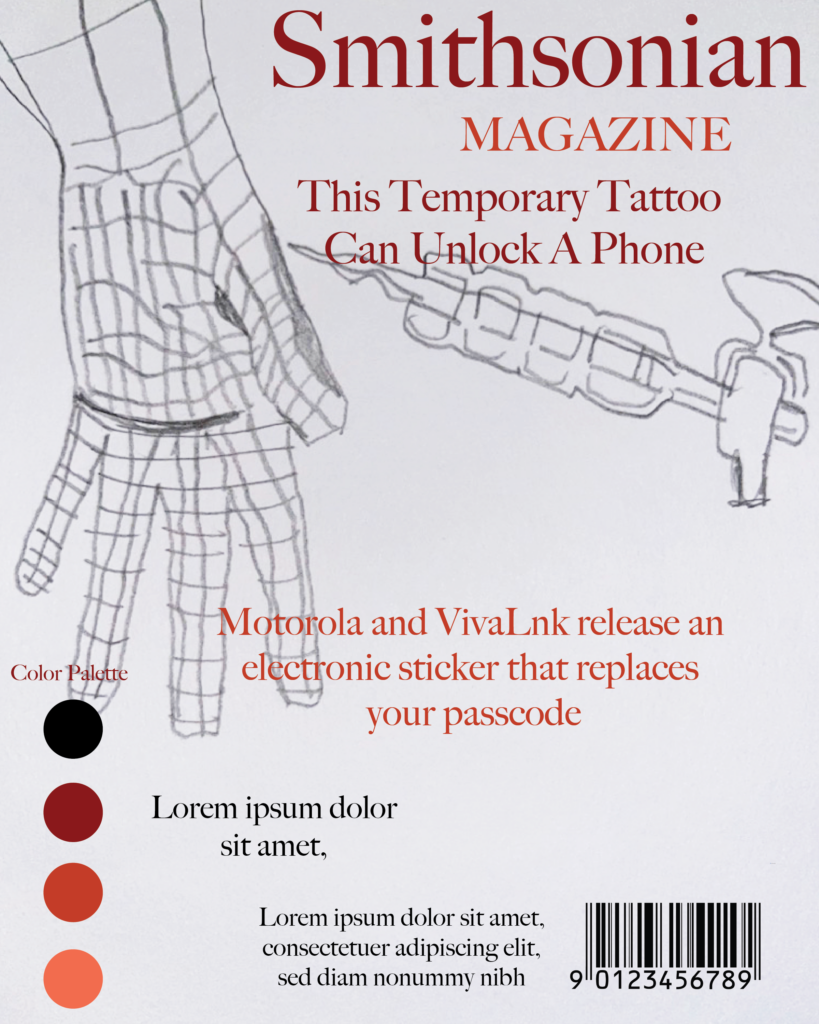
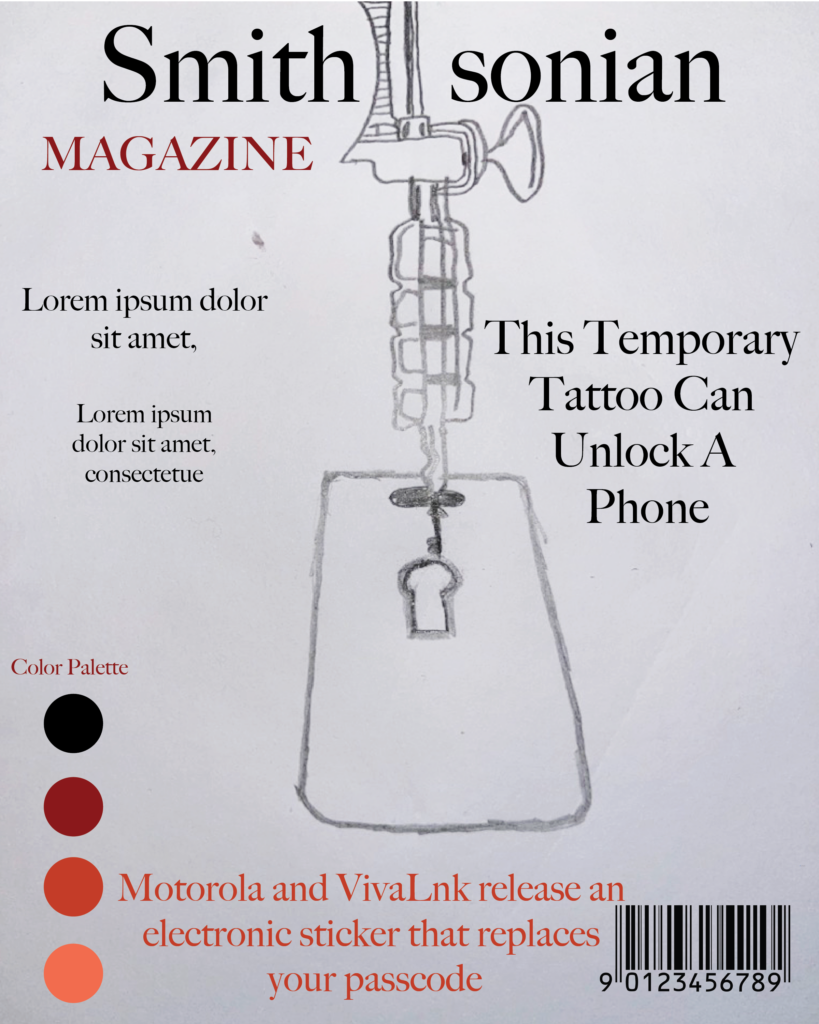
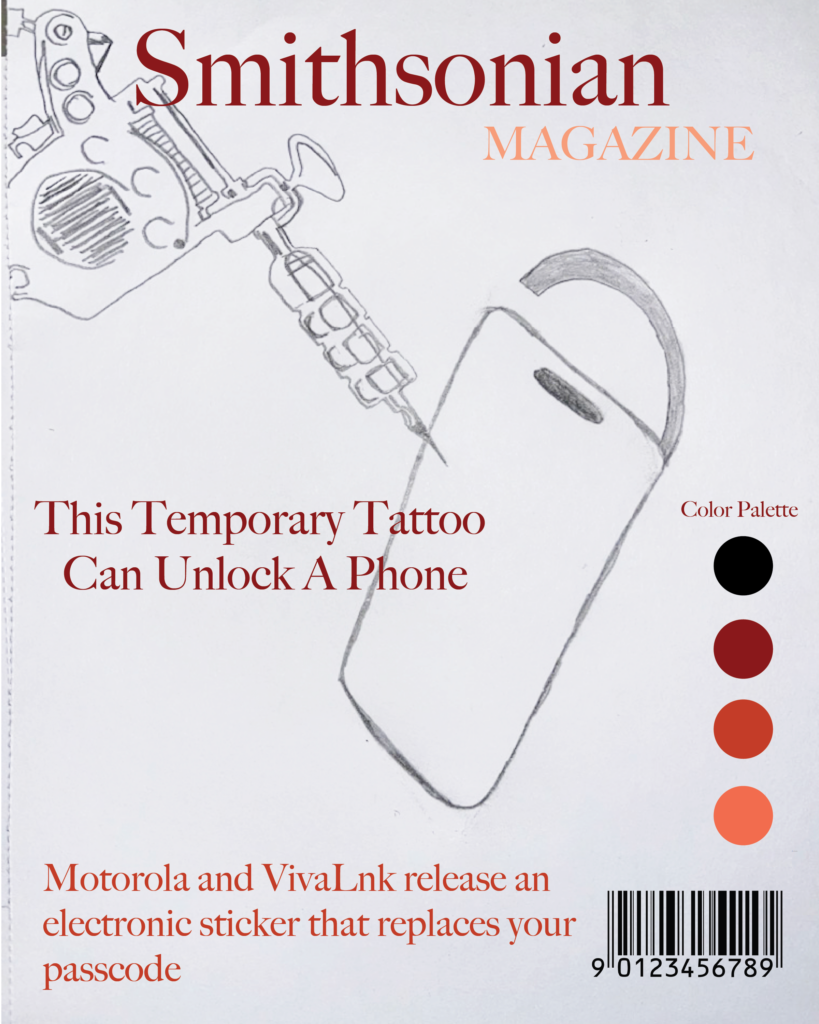
Final Product
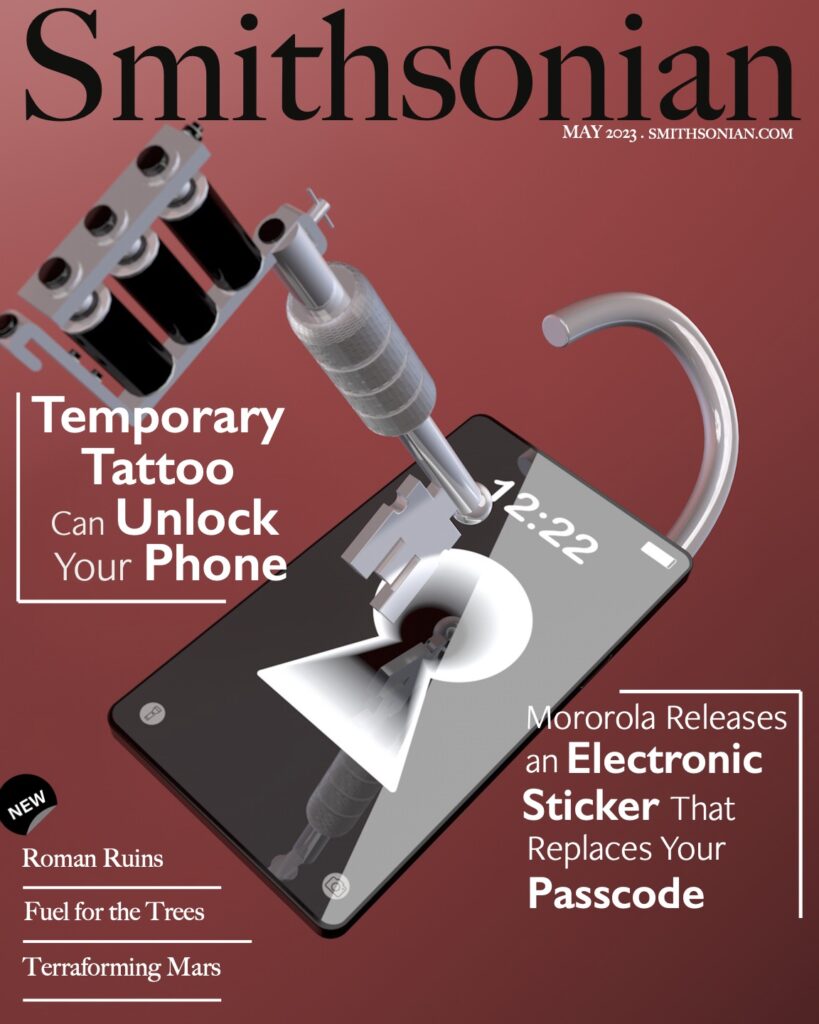
Learn more!
Check out The Verge article about Motorola and Vivalnk’s temporary tattoo! Also read Smithsonian Magazine’s article explaining more about the tattoo that unlocks your phone, this article was my inspiration for my design.

